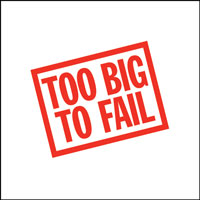 The fundamental problem with the American health care finance system is that reliance on tax-deductible, employer-based health insurance and government subsidized insurance (such as Medicaid, Medicare) created a culture since WWII in which consumers of health care at the point of delivery expect to pay none (or only a small fraction) of the cost of that health care.
The fundamental problem with the American health care finance system is that reliance on tax-deductible, employer-based health insurance and government subsidized insurance (such as Medicaid, Medicare) created a culture since WWII in which consumers of health care at the point of delivery expect to pay none (or only a small fraction) of the cost of that health care.
That culture has led to highly inefficient consumption of health care services and product. Some folks consume too much because they have no financial incentive to be prudent about their purchases, while many others who really need services and products go without.
So, reforming the system should start with changing the culture, right?
US wealthy should pay for health care overhaul, poll finds
Data could boost House plan to tax top-tier earners
WASHINGTON – Americans don’t want to shoulder the cost of President Obama’s health care overhaul themselves. They think the rich should pay for it.
That’s the finding from a new Associated Press poll, and it could be a boost for House Democrats, whose plan approved this month proposed taxing upper-income people to fund their sweeping remake of the medical system. . . .
Thus, rather than true reform, Congress simply debates transferring payments from one group to another. Reminds me of the observation that the late Milton Friedman used to make about spending money:
There are four ways in which you can spend money. You can spend your own money on yourself. When you do that, why then you really watch out what you’re doing, and you try to get the most for your money.
Then you can spend your own money on somebody else. For example, I buy a birthday present for someone. Well, then I’m not so careful about the content of the present, but I’m very careful about the cost.
Then, I can spend somebody else’s money on myself. And if I spend somebody else’s money on myself, then I’m sure going to have a good lunch!
Finally, I can spend somebody else’s money on somebody else. And if I spend somebody else’s money on somebody else, I’m not concerned about how much it is, and I’m not concerned about what I get.
And that’s government. . .









